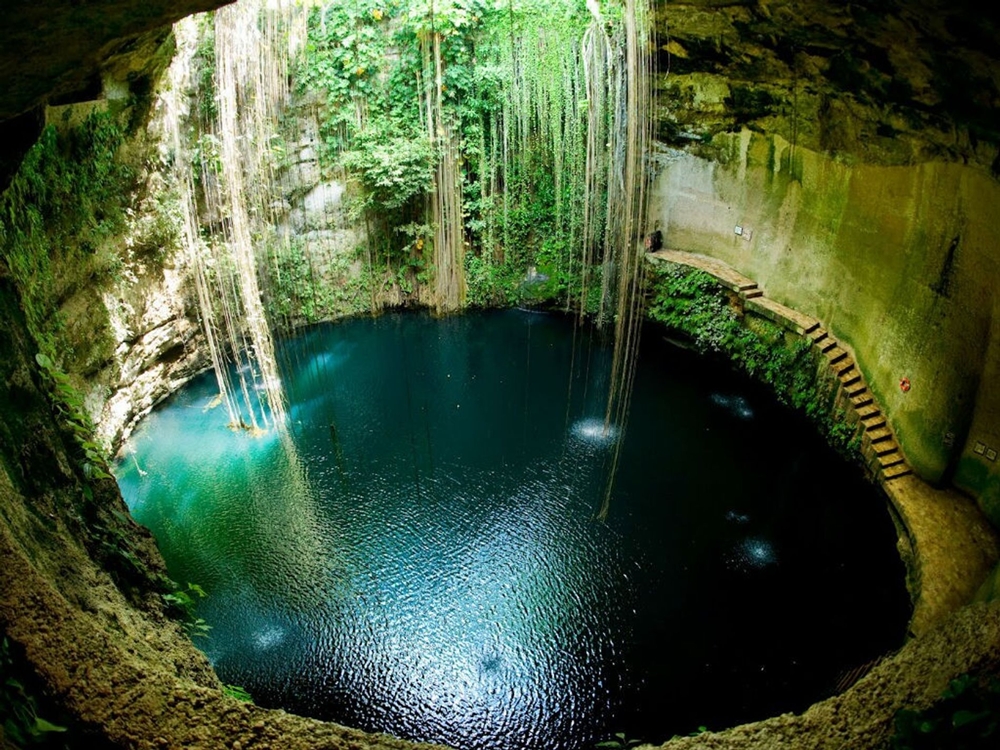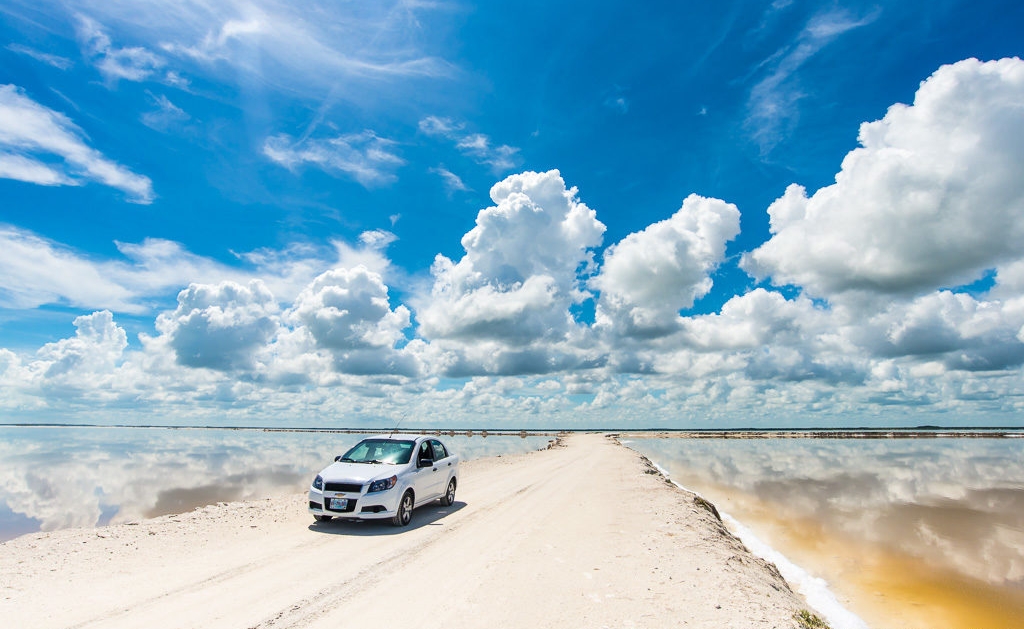Introduction
How to get to Cenote Suytun might seem complicated at first, but trust me – this underground paradise is absolutely worth every bit of planning! Did you know that over 2 million tourists visit Yucatan cenotes each year, yet Cenote Suytun remains one of the most breathtaking and accessible sacred cenotes in the region?
I’ll never forget my first glimpse of those famous stalactites perfectly framing the crystal clear water below. The natural light streaming through the opening above created this almost mystical atmosphere that made me understand why ancient Mayans considered these freshwater cenotes sacred. Whether you’re staying in Cancun, Tulum, or Playa del Carmen, how to get to Cenote Suytun is easier than you might think once you know the options.
Also read: Off-the-Beaten-Path Yucatan Road Trip in 2025: Hidden Gems & Local Secrets
This complete guide covers everything from rental car routes to colectivo transportation, cenote tour packages to independent travel tips. We’ll explore how to get to Cenote Suytun, the best times to avoid crowds, what to expect for entrance fees, and how to combine your visit with nearby Valladolid attractions or even Chichen Itza. Ready to dive into this adventure?
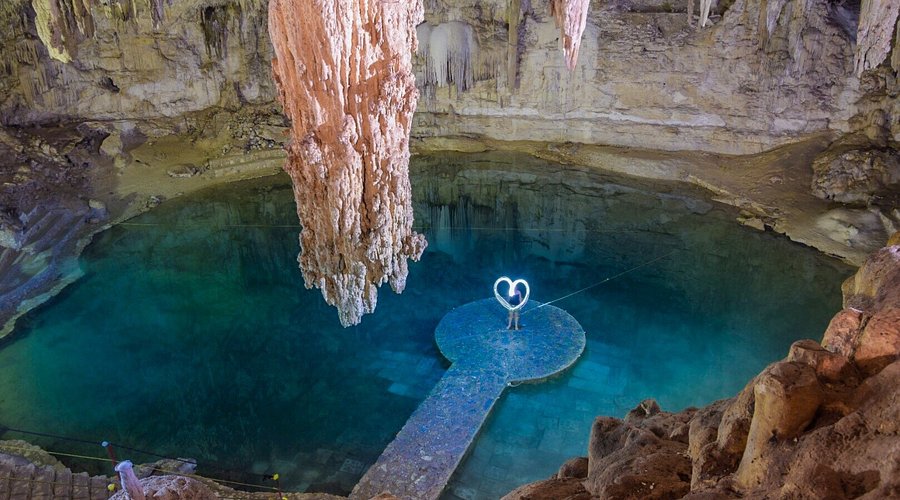
Discover What Makes Cenote Suytun an Underground Wonder
Cenote Suytun isn’t just another swimming hole – it’s a geological masterpiece that’s been forming for thousands of years. Located just outside Valladolid, this underground cenote features a dramatic circular opening that creates the perfect natural spotlight effect.
The main attraction? Those iconic stalactites hanging like nature’s chandelier above the swimming platform. When sunlight filters through the cenote opening, it creates this incredible beam of light that photographers and Instagram enthusiasts go crazy for. But here’s the thing – the magic isn’t just about getting that perfect shot.
If you’re wondering how to get to Cenote Suytun, you’ll be happy to know it’s surprisingly accessible whether you’re driving, taking a colectivo, or joining a tour. What really sets this place apart is the combination of accessibility and authenticity. Unlike some overly commercialized cenotes, how to get to Cenote Suytun doesn’t involve long treks or confusing directions—it’s easy, straightforward, and completely worth it.
Useful info
- Pronatura Península de Yucatán A.C. – Nonprofit for local ecological preservation
- Mexican National Parks & Protected Areas (includes Yucatán biospheres)
The Sacred History Behind This Natural Pool
Ancient Mayans believed cenotes were gateways to the underworld, and standing in Cenote Suytun, you can totally understand why. The acoustics are incredible, the temperature stays consistently cool at around 75°F (24°C), and there’s this almost spiritual quietness that envelops you.
Archaeological evidence suggests that Mayans used cenotes not just for fresh water, but for ceremonial purposes. They would throw precious objects and sometimes make human sacrifices to appease their gods. Don’t worry though – the only thing you’ll be sacrificing today is maybe your fear of deep water! If you’re wondering how to get to Cenote Suytun, it’s closer than you think and well worth the journey.
Why This Cenote Stands Out Among Yucatan’s 6,000+ Caves
Yucatan Peninsula boasts over 6,000 cenotes, so what makes Suytun special? First, the water visibility extends for dozens of feet – we’re talking gin-clear water where you can see the bottom even in the deepest sections. Second, the geological formations are simply spectacular, with stalactites that have been growing for millennia.
But perhaps most importantly, Cenote Suytun offers that perfect balance between natural beauty and practical accessibility. You’re not hiking through dense jungle or rappelling down cliffs – just a short walk from the parking area gets you to this underground paradise. Wondering how to get to Cenote Suytun? It’s surprisingly simple..
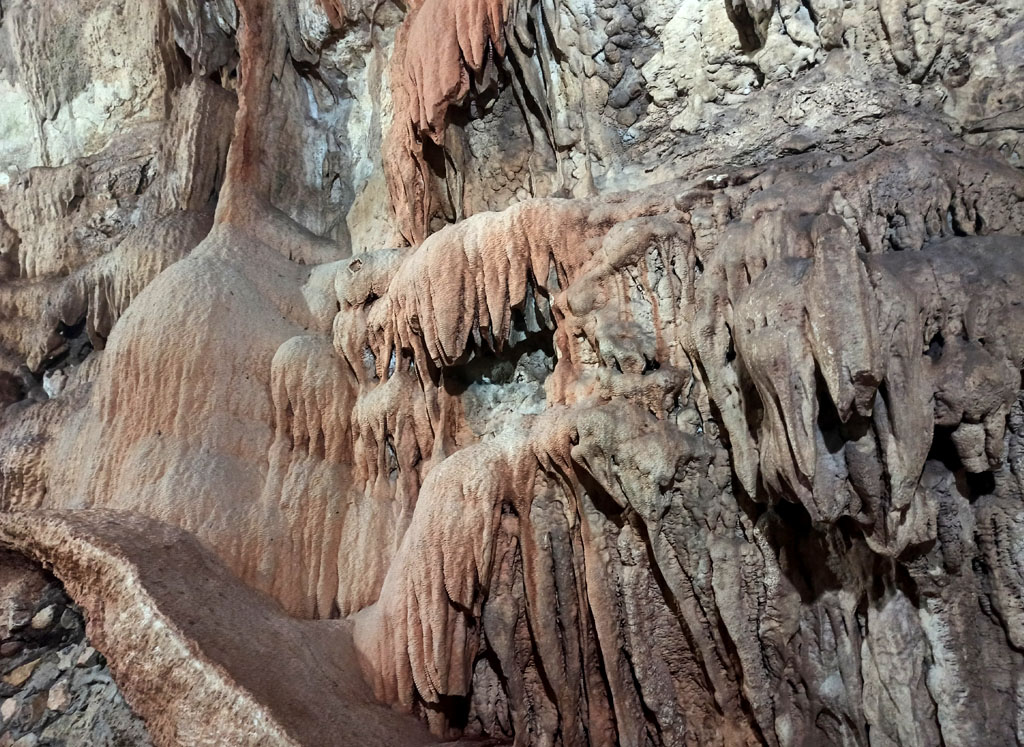
Master Your Transportation Options for Reaching Cenote Suytun
Getting to Cenote Suytun requires some planning, but you’ve got several solid options depending on your budget, group size, and adventure level. The cenote sits about 8 kilometers southwest of Valladolid, making it accessible from all major tourist destinations in the Riviera Maya.
Here’s something I wish someone had told me before my first visit: the journey is half the adventure! The drive through Yucatan countryside offers glimpses of traditional Maya villages, roadside fruit stands, and that authentic Mexico you don’t see from resort windows.
Pro Tip: Download offline maps before heading out. Cell service can be spotty in some rural areas, and you don’t want to be driving around lost with a car full of eager cenote explorers. Not sure how to get to Cenote Suytun? Just a little research goes a long way.
Rental Car Freedom: Your Most Flexible Choice
Renting a car gives you complete control over your schedule and lets you explore multiple cenotes in one day. The drive from Cancun takes about 2.5 hours via Highway 180, while Tulum visitors can reach it in roughly 1.5 hours using the faster toll road.
I always recommend starting early – not just to beat the crowds, but because that morning light hitting the cenote creates the most spectacular photos. Plus, Mexican highway systems can get busy, especially during peak tourist season from December through March.
Rental cars in Mexico are surprisingly affordable, starting around $25–35 per day for economy vehicles. Major international companies like Hertz, Avis, and Budget operate throughout the Riviera Maya. If you’re wondering how to get to Cenote Suytun, renting a car might just be the easiest and most flexible option.
Budget-Friendly Colectivo Adventures
Want to travel like a local? Colectivos (shared vans) run regularly from major cities to Valladolid for a fraction of taxi costs. These white vans with blue stripes are a Mexican institution – they’re safe, cheap, and give you a genuine cultural experience.
If you’re wondering how to get to Cenote Suytun on a budget, this is your best bet. From Valladolid’s main terminal, you can catch another colectivo or taxi for the final stretch to the cenote. The total cost rarely exceeds $10 per person, making this the most budget-friendly option for independent travelers.
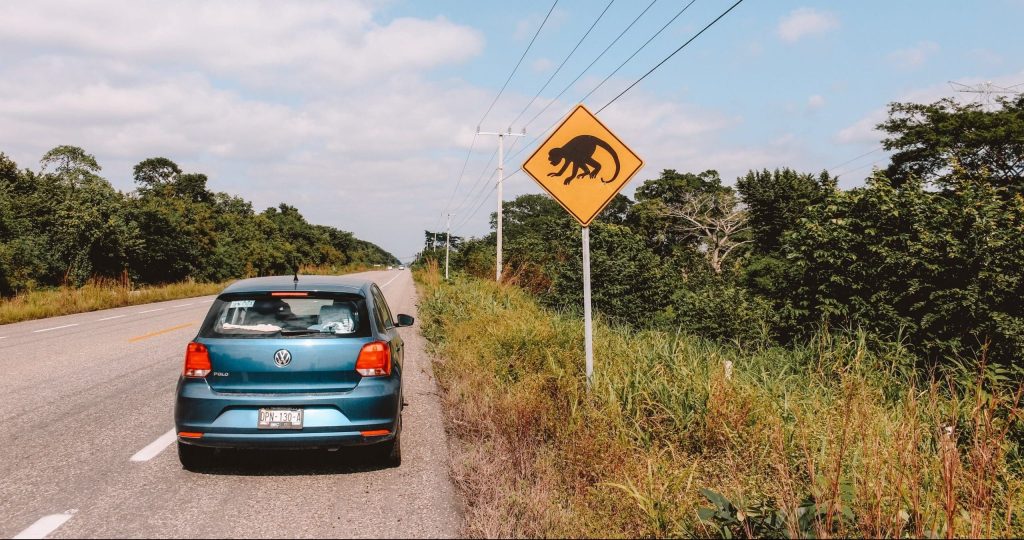
Navigate Like a Pro: Routes and Road Conditions
Let’s get specific about those routes, because nothing ruins a cenote day like getting lost on unfamiliar roads! Mexican highways are generally well-maintained, but knowing what to expect helps you plan arrival times and fuel stops.
From Cancun: The Scenic Coastal Route vs. Direct Highway
You’ve got two main options from Cancun. The coastal route through Playa del Carmen offers beautiful ocean views but takes longer due to traffic and numerous speed bumps (topes) through towns. The direct route via Highway 180 is faster and gives you a taste of authentic Yucatan countryside.
- Distance: 160 kilometers (100 miles)
- Driving time: 2-2.5 hours
- GPS coordinates: 20.9167° N, 88.1500° W
- Toll costs: Approximately 50-80 pesos
- Fuel stops: Multiple gas stations along Highway 180
The Highway 180 route passes through Chichen Itza, making it easy to combine visits if you’re planning a full day of exploration. Just remember that Chichen Itza gets crowded after 10 AM, so start early if you want to see both attractions.
Tulum Travelers: Your Fastest Path to Underground Paradise
From Tulum, head north on Highway 109 until you hit Highway 180, then continue west toward Valladolid. This route passes through some gorgeous jungle scenery and small Maya communities where you might spot traditional thatched-roof houses and backyard cenotes.
If you’re trying to figure out how to get to Cenote Suytun, this drive offers both convenience and beauty. Road conditions in Yucatan are generally excellent on major highways, though you might encounter some construction zones during rainy season (May through October). Keep some pesos handy for potential toll roads – they’re worth it for the time savings and better road conditions!
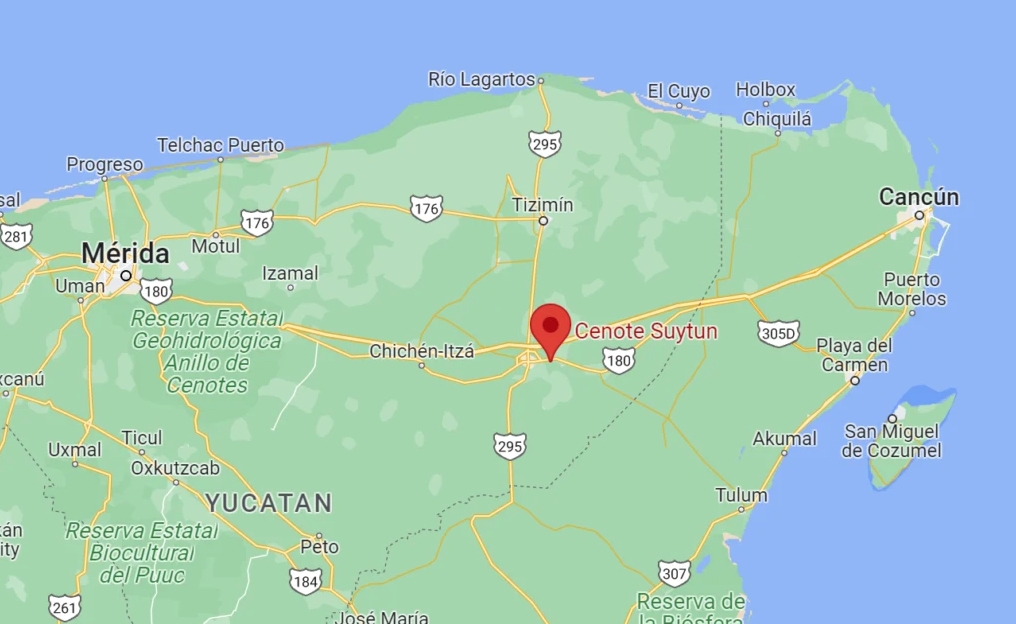
Choose Your Perfect Transportation Method
This is where personal preference really matters, and I’ve tried every option over multiple trips to Yucatan. Each transportation method offers different advantages, and your choice depends on factors like budget, group size, flexibility needs, and comfort preferences.
Private Drivers vs. Tour Packages: What Works Best?
Private drivers offer flexibility and local knowledge that you can’t get from tour packages. A good driver becomes your local guide, stopping at fruit stands, recommending authentic restaurants, and sharing stories about Maya culture that you’d never hear otherwise.
If you’re wondering how to get to Cenote Suytun without the hassle of driving yourself, hiring a private driver is an excellent option. Tour packages work great for first-time visitors who want everything handled – transportation, entrance fees, sometimes lunch, and often visits to multiple cenotes in one day. But if you’re the type who likes discovering hidden gems along the way, independent travel wins every time.
Private driver costs typically range from $150–250 for a full day, depending on distance and number of stops. Tour packages range from $80–150 per person but include multiple cenotes and sometimes lunch.
Public Transportation: The ADO Bus Experience
ADO buses provide comfortable, air-conditioned transport from major cities to Valladolid. These aren’t your typical chicken buses – ADO operates modern coaches with reclining seats, restrooms, and sometimes even WiFi.
Not sure how to get to Cenote Suytun without renting a car? This is one of the most affordable and comfortable ways. From Valladolid, local transportation or a short taxi ride gets you to the cenote entrance. This option takes longer but costs significantly less than private transport. ADO tickets from Cancun to Valladolid cost around 200–300 pesos ($10–15 USD).
Local Secret: Ask your hotel concierge about “combi” vans – these local shared taxis often provide door-to-door service for less than private drivers but more comfort than public buses.
Time Your Visit for Maximum Cenote Magic
Timing can make or break your cenote experience, and I learned this lesson the hard way during a crowded afternoon visit when tour buses descended like locusts! Understanding crowd patterns, lighting conditions, and seasonal variations helps you plan the perfect visit.
Cenote Suytun Opening Hours and Crowd Patterns
The cenote typically opens at 8:00 AM and closes around 5:00 PM, though these hours can vary seasonally. Here’s an insider tip I learned after multiple visits: that famous light beam effect is strongest between 11:30 AM and 1:30 PM when the sun is directly overhead.
Wondering how to get to Cenote Suytun and still catch that perfect lighting? Time your arrival to hit the sweet spot before the tour buses roll in. If you’re more interested in peaceful swimming than photography, aim for early morning (8:00–10:00 AM) or late afternoon (3:00–5:00 PM) visits.
Weekdays are significantly less crowded than weekends, especially Tuesday through Thursday. If you’re visiting during peak season (December–March), arriving right at opening time gives you the best chance for those magazine-worthy photos without crowds.
Seasonal Considerations for Your Cenote Adventure
Dry season (November through April) offers the most predictable weather and clearest water, but it’s also peak tourist season with higher prices and bigger crowds. Rainy season brings fewer crowds and lush jungle scenery, though afternoon thunderstorms can affect outdoor activities.
Wondering how to get to Cenote Suytun during these seasonal shifts? No matter when you visit, the cenote’s water temperature remains fairly constant year-round at 75–78°F (24–26°C), making swimming comfortable regardless of season. However, air temperature varies dramatically – dry season can hit 95°F (35°C) while rainy season stays cooler but more humid.
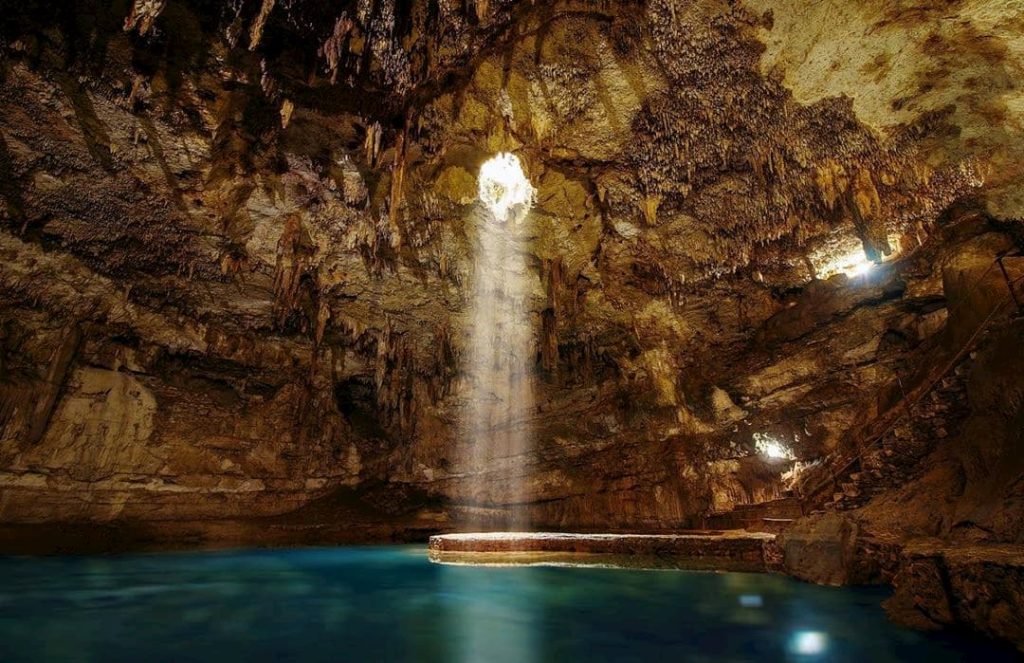
Master the Art of Cenote Photography and Swimming
Let’s talk about what everyone really wants to know – how to get those incredible photos and make the most of your swimming experience! After watching countless visitors struggle with cameras and miss out on the actual experience, I’ve got some hard-earned tips to share.
Capturing That Perfect Stalactite Silhouette
Everyone wants that iconic shot with the stalactites framing the swimming platform, right? Here’s the thing – it’s not as easy as it looks on Instagram! The lighting conditions change dramatically throughout the day, and getting the exposure right requires some patience.
Before you focus on the perfect shot, make sure you know how to get to Cenote Suytun and time your visit for ideal lighting. Bring a waterproof phone case or underwater camera, and don’t be afraid to get in the water for unique angles. The limestone formations create natural reflections that can make for stunning compositions if you position yourself correctly.
Professional tip: If you’re serious about underwater photography, consider bringing your own snorkeling gear. The rental equipment works fine, but having your own mask ensures a perfect fit for those underwater shots. Plus, you’ll want to spend more time exploring the cenote’s depths!
Swimming Safety in Crystal Clear Waters
The water in Cenote Suytun is incredibly clear – we’re talking 100+ feet of visibility – but it’s also deep in the center, reaching depths of over 100 feet. Life jackets are available for rent, and I’d recommend them even for strong swimmers. Why? The limestone walls can be slippery, and having that extra buoyancy lets you focus on enjoying the experience rather than treading water.
Before diving into all that, make sure you’ve figured out how to get to Cenote Suytun safely and on time – early arrivals beat both the crowds and the heat. The cenote maintains a consistent temperature that feels refreshing after the Yucatan heat, but some people find it chilly initially. Don’t let that stop you – your body adjusts quickly, and the swimming experience is absolutely magical.
Watch out for the platform edges and stairs – limestone can be slippery when wet. Take your time entering and exiting the water, and don’t feel pressured to jump from higher platforms if you’re not comfortable.
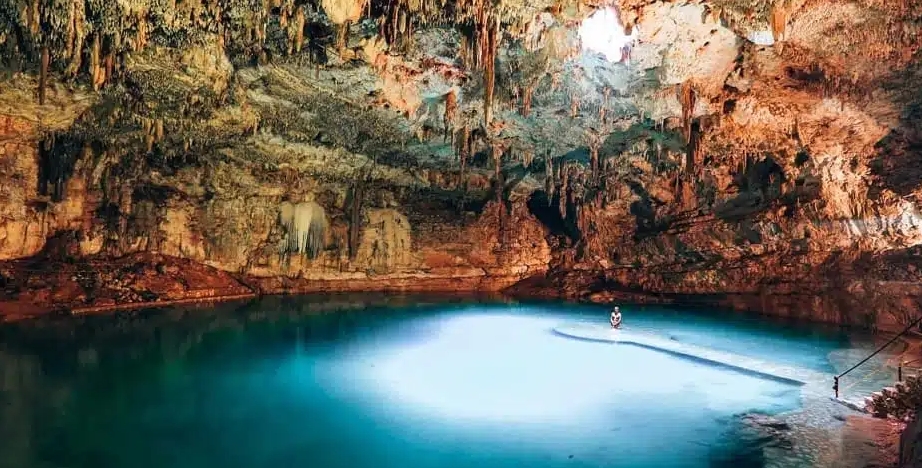
Combine Your Visit with Nearby Yucatan Treasures
Since you’re already making the journey to this part of Yucatan, why not maximize your adventure? The region around Cenote Suytun offers incredible opportunities to combine natural wonders with cultural experiences and historical sites.
Valladolid: Colonial Charm and Local Flavors
Since you’re already heading to the Valladolid area, why not make a full day of it? This colonial city offers incredible street food, beautiful architecture, and that authentic Mexican atmosphere that many resort areas lack.
If you’re planning your trip and wondering how to get to Cenote Suytun, Valladolid makes the perfect base. The central plaza comes alive in the evenings, and I always recommend trying the local sopa de lima (lime soup) or cochinita pibil (slow-roasted pork) from one of the family-run restaurants around the square. Prices are incredibly reasonable – a full meal rarely costs more than $8–10 USD.
Valladolid also has its own cenote right in the city center – Cenote Zaci – which makes for an interesting comparison to Suytun’s underground cave environment. It’s completely different but equally beautiful in its own way.
Chichen Itza: Ancient Wonders Meet Natural Beauty
Chichen Itza sits just 45 minutes from Cenote Suytun, making it possible to combine Mayan history with natural beauty in one epic day trip. Start early at the ruins to beat the heat and crowds, then cool off in the cenote’s refreshing waters afterward.
If you’re mapping out how to get to Cenote Suytun from Chichen Itza, rest assured it’s a short, straightforward drive—perfect for pairing the two sites. This combination works particularly well because Chichen Itza gets brutally hot by midday, and nothing beats diving into cool cenote water after walking around ancient pyramids under the blazing Yucatan sun. Plus, you’ll have worked up an appetite for that authentic Valladolid lunch!
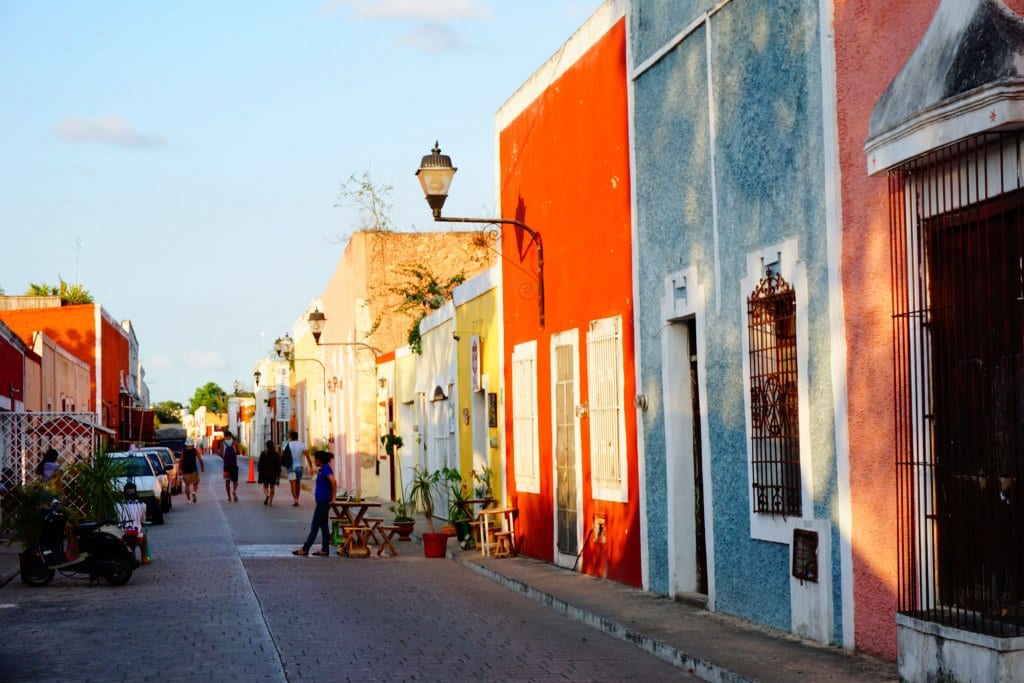
Essential Planning Tips for Independent Travelers
Independent travel in Yucatan requires some preparation, but don’t let that scare you off! With proper planning, you’ll have more authentic experiences and save money compared to organized tours. Figuring out how to get to Cenote Suytun on your own gives you the flexibility to arrive early, beat the crowds, and set your own pace.
What to Pack for Your Cenote Adventure
Here’s my essential packing list based on multiple cenote visits and learning from mistakes:
- Waterproof phone case or underwater camera – Those photos won’t take themselves!
- Biodegradable sunscreen – Regular sunscreen harms the ecosystem and is often prohibited
- Quick-dry towel and change of clothes – Trust me, you’ll want dry clothes for the drive home
- Water shoes for rocky surfaces – Limestone can be sharp and slippery
- Snorkeling gear (optional) – Rentals available but your own gear fits better
- Cash for entrance fees and tips – Most cenotes don’t accept cards
- Waterproof bag – Protect your phone, wallet, and dry clothes
- Insect repellent – Jungle areas can have mosquitoes
Packing Secret: Bring a small cooler with drinks and snacks. Cenote areas often have limited food options, and staying hydrated in Yucatan heat is crucial for enjoying your adventure.
Currency and Payment Expectations
Most cenotes, including Suytun, operate on a cash-only basis for entrance fees. Current rates typically range from 30–80 pesos per person (roughly $2–5 USD), though prices can change seasonally and without notice.
If you’re planning how to get to Cenote Suytun, be sure to factor in cash availability. ATMs in Valladolid work with international cards, so you can grab cash on your way. However, I always recommend having cash ready before leaving major cities, as rural ATMs sometimes run out of money or experience technical issues.
Tipping isn’t required but is appreciated – 20–50 pesos for guides or helpful staff goes a long way in showing appreciation for their service and local knowledge.
Navigate Language and Cultural Considerations
Don’t let language barriers prevent you from exploring! Most Mexicans are incredibly patient and helpful with visitors attempting to speak Spanish, and even basic phrases show respect for local culture. If you’re asking locals for directions or tips on how to get to Cenote Suytun, a few key phrases can really improve your experience.
Helpful Spanish Phrases for Cenote Visits
Knowing a few key Spanish phrases can make a big difference, especially if you’re figuring out how to get to Cenote Suytun using local transport or interacting with staff at the entrance.
Even basic Spanish goes a long way with local operators. Try:
- “¿Cuánto cuesta?” (How much does it cost?)
- “¿Dónde está el cenote?” (Where is the cenote?)
- “¿Hay salvavidas?” (Are there life jackets?)
- “¿Es seguro nadar aquí?” (Is it safe to swim here?)
- “Muchas gracias” (Thank you very much)
Most cenote staff speak at least some English, but showing effort to speak Spanish often leads to friendlier service—and sometimes, insider tips you won’t get otherwise. Whether you’re asking for directions or trying to confirm hours, a few polite phrases can go a long way on your journey in how to get to Cenote Suytun and enjoy it like a local.
Respecting Sacred Cenote Traditions
Remember, these aren’t just tourist attractions – they’re sacred sites with deep cultural significance. Whether you’re learning how to get to Cenote Suytun or planning your visit, it’s important to approach the experience with respect. Avoid loud music, follow photography rules, and don’t touch or climb on geological formations. The limestone structures took thousands of years to form and are incredibly fragile.
Many locals still consider cenotes spiritual places, so maintaining respectful behavior shows appreciation for Mexican culture and helps preserve these natural wonders for future generations.
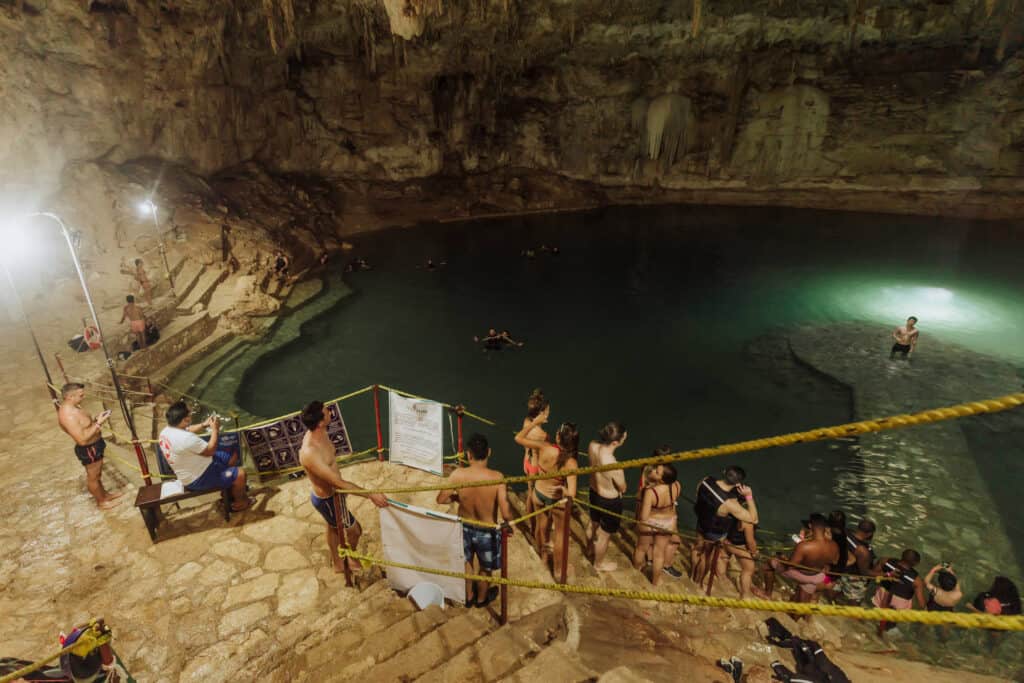
Emergency Planning and Backup Transportation
Nobody likes to think about things going wrong during vacation, but having backup plans ensures minor issues won’t ruin your trip—especially when figuring out how to get to Cenote Suytun safely and smoothly. Mexico’s tourist infrastructure is generally reliable, but preparation is your best travel companion.
Staying Connected in Remote Areas
Cell service can be unreliable around some cenotes. Before heading out, download offline maps—Google Maps lets you save entire regions, which works even when you’re off the grid. This becomes especially useful when navigating unfamiliar routes or learning how to get to Cenote Suytun without clear signage.
Let someone know your travel plans and estimated return time if you’re going independently. WhatsApp is widely used across Mexico and often works when regular calls don’t. Save the contact info for your hotel, transportation services, or local guides—it can make arranging help or asking for directions much easier in a pinch.
Alternative Transportation if Plans Change
Weather, road conditions, or vehicle issues can disrupt travel. Keep local taxi contacts handy and check ADO bus schedules back to major cities. Most cenote operators are happy to help arrange transportation if needed – they want you to return safely and recommend the experience.
If you’re mapping how to get to Cenote Suytun and back, consider travel insurance that covers transportation disruptions. It’s especially useful during the rainy season when weather can change fast.
Making the Most of Your Cenote Suytun Experience
Beyond logistics like how to get to Cenote Suytun, let’s focus on what makes this destination so special. When you finally descend into the cenote and stand beneath that natural skylight with water all around, you realize this isn’t just a swimming spot—it’s a spiritual, otherworldly place.
Photography Ethics and Courtesy
Yes, we all want that perfect cenote shot. But after learning how to get to Cenote Suytun and traveling all this way, don’t let your entire experience happen behind a lens. Spend your first 15–20 minutes just being present—swimming, floating, listening to echoes off the cave walls. The magic lies in the stillness.
When you do start snapping photos, be mindful of others. That iconic stalactite shot may require someone to move—ask politely and return the favor. Sharing photo spots and taking turns helps everyone walk away with something memorable.
Understanding the Ecosystem
Cenotes like Suytun are delicate ecosystems formed over thousands of years. The crystal-clear water is filtered through porous limestone, creating a pristine environment home to unique aquatic life.
Protect this beauty by using only biodegradable sunscreen, avoiding direct contact with formations, and staying mindful not to stir up sediment. Learning how to get to Cenote Suytun is just one part of the journey—preserving it for the next traveler is the rest.
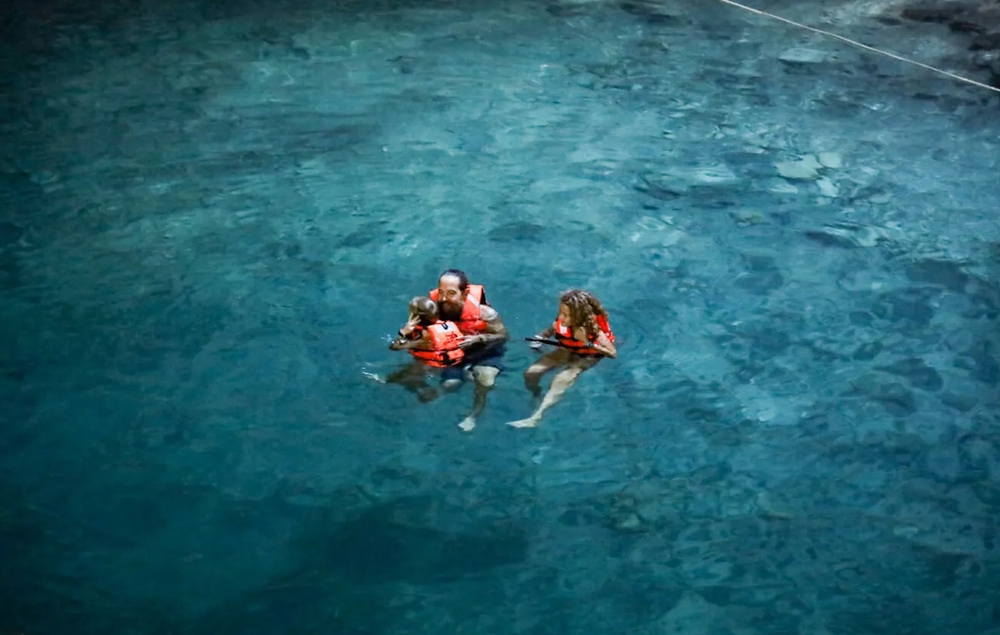
Your Cenote Suytun Adventure Awaits
How to visit Cenote Suytun successfully comes down to planning ahead while staying flexible enough to embrace unexpected discoveries along the way. Whether you’re researching how to get to Cenote Suytun via a rental car, the budget-friendly colectivo experience, or the convenience of organized tours, this underground wonder delivers an unforgettable experience that connects you with both natural beauty and ancient Mayan culture.
The journey to reach these crystal-clear waters might require some effort, but standing beneath those magnificent stalactites with natural light streaming down around you makes every minute of travel planning worthwhile. If you’re still deciding how to get to Cenote Suytun in a way that matches your style and budget, know that every route leads to something truly magical. You’ll understand why ancient Mayans considered these places sacred, and you’ll leave with memories that last far longer than any Instagram post.
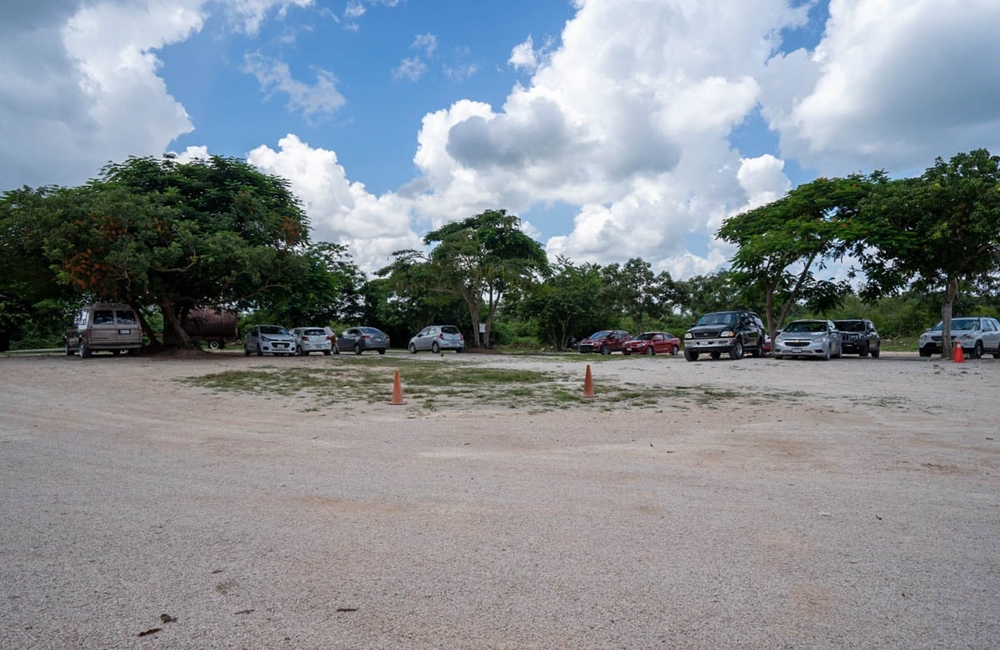
Start early, bring your sense of adventure, and prepare for one of Yucatán’s most magical experiences. Learning how to get to Cenote Suytun is just the first step—what awaits is a breathtaking blend of nature, history, and serenity that few places on Earth can offer.
Whether you drive yourself, catch a colectivo, or join a guided tour, knowing how to get to Cenote Suytun ensures you arrive ready to fully enjoy the underground wonder that’s captivated travelers for generations. The cenote is waiting—dive in and discover why millions make this unforgettable journey to Mexico’s hidden paradise every year.
FAQ: How To Get To Cenote Suytun
Where exactly is Cenote Suytun?
Cenote Suytun is located just outside of Valladolid in Mexico’s Yucatán Peninsula. If you’re researching how to get to Cenote Suytun, you’ll be glad to know it’s conveniently accessible via Highway 180, making it easy whether you’re renting a car or using local transportation.
How to get to Cenote Suytun from Valladolid?
It’s a quick 10–15 minute ride. You can take a taxi, rent a bike, or catch a colectivo (shared van). If you’re wondering how to get to Cenote Suytun like a local, colectivos are your best budget-friendly choice and run frequently from the city center.
How to get to Cenote Suytun from Cancún, Tulum, or Playa del Carmen?
From the coast, you have multiple options. The most flexible way is to drive yourself — it takes about 2 to 3 hours. You can also take an ADO bus to Valladolid and catch a taxi or colectivo from there. Many visitors searching how to get to Cenote Suytun from the Riviera Maya also book full-day guided tours, which often include other stops like Chichén Itzá.
Can I visit Cenote Suytun on a guided tour?
Absolutely. If you want to skip figuring out how to get to Cenote Suytun independently, joining a tour is a great choice. Most tours include transportation, entry fees, and sometimes even lunch, making for a stress-free experience.
How much does it cost to get in?
Entrance is around 250 pesos (~$15 USD). This includes access to the main cenote, a life jacket, and use of basic facilities. Be sure to bring cash, as credit cards aren’t always accepted.
What are the hours of operation?
Cenote Suytun is open daily from 9 AM to 5 PM, with last entry around 4:30 PM. Plan your visit accordingly, especially if you’re figuring out how to get to Cenote Suytun from farther locations like Cancún or Mérida.
Can you swim in Cenote Suytun?
Yes! Swimming is allowed, and it’s one of the main highlights. The water is crystal clear and refreshingly cool. Life jackets are included with admission.
When’s the best time to visit for photography?
If you’re visiting specifically for photos, mid-morning (around 11:30 AM to 1:30 PM) offers the best light beam through the roof. Still trying to plan how to get to Cenote Suytun for that perfect Instagram shot? Arrive early to beat the crowds.
How long should I plan to stay?
Most visitors stay about 1 to 2 hours. If you’re combining other cenotes or visiting Chichén Itzá, make sure your plan for how to get to Cenote Suytun includes buffer time for travel and relaxation.
What should I bring?
Bring a swimsuit, towel, waterproof phone case, biodegradable sunscreen, and water shoes. Don’t forget cash and your camera—you’ll definitely want photos.
Do they have facilities at Cenote Suytun?
Yes. You’ll find bathrooms, changing rooms, parking, and a small shop. It’s well-equipped for visitors regardless of how you get to Cenote Suytun.

